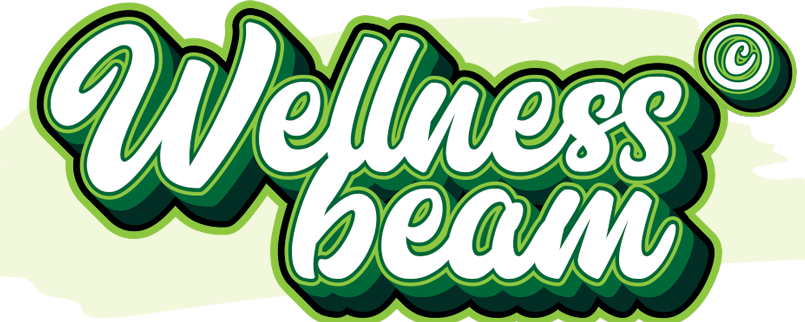Collaborative Wellness: How Working Together Boosts Health and Well-Being
Have you ever noticed that achieving health goals feels easier when you’re not doing it alone? Whether it’s sticking to a workout routine, managing stress, or eating healthier, the power of community and teamwork can make all the difference.
Collaborative wellness is the practice of enhancing well-being through shared goals, social support, and collective action. Unlike individual wellness approaches that focus solely on personal effort, collaborative wellness leverages the energy, motivation, and accountability of groups—whether in workplaces, communities, or online platforms.
Understanding Collaborative Wellness
Collaborative wellness focuses on working together to achieve better health outcomes. It can include anything from fitness challenges with friends to workplace wellness programs or online wellness communities.
Key aspects:
- Shared Goals: Participants align on objectives, such as increasing daily activity or practicing mindfulness.
- Mutual Accountability: Group members support each other and track progress together.
- Community Support: Social interaction and encouragement improve adherence and mental health.
Historically, collaborative wellness draws from community health initiatives, corporate wellness programs, and peer-support models. According to Harvard Health, social connections play a critical role in sustaining healthy habits and reducing stress:
Key Benefits of Collaborative Wellness
Personal Benefits
- Enhanced Motivation: Group participation encourages consistency.
- Improved Mental Health: Social support reduces stress, anxiety, and depression.
- Better Adherence to Goals: People are more likely to stick with wellness routines in supportive groups.
Social Benefits
- Stronger Community Bonds: Engaging with others fosters belonging and empathy.
- Enhanced Communication Skills: Collaborative wellness programs improve teamwork and relationship-building.
- Evidence: Studies show group-based programs increase adherence to fitness and diet plans by 20–30%.
Workplace Benefits
- Higher Employee Engagement: Teams working on wellness initiatives report more satisfaction.
- Lower Absenteeism: Engaged employees are healthier and less likely to miss work.
- Boosted Productivity: Gallup research finds that well-being programs can improve performance by up to 21%.
Core Principles of Collaborative Wellness
To succeed, collaborative wellness programs should follow these principles:
- Shared Goals and Accountability – Clear objectives and mutual support.
- Inclusivity and Diversity – Programs should welcome participants of all ages, abilities, and backgrounds.
- Transparent Communication – Feedback loops keep everyone informed and engaged.
- Consistent Measurement – Tracking progress ensures continuous improvement.
Example: A corporate wellness program that combines step challenges, team meditation sessions, and monthly health check-ins shows significantly higher participation and satisfaction rates.
Strategies to Implement Collaborative Wellness
Workplace Strategies
- Team Challenges: Step count competitions, hydration challenges, or meditation streaks.
- Peer Coaching or Buddy Systems: Colleagues pair up to support each other’s wellness goals.
- Wellness Committees: Employees organize wellness events or workshops.
Community & Social Strategies
- Group Fitness Classes: Yoga, cycling, or running clubs foster shared accountability.
- Online Wellness Forums: Virtual communities encourage discussion, motivation, and resource-sharing.
- Nutrition Workshops: Collaborative meal prep or healthy cooking sessions.
Digital Tools
- Apps like Strava, Fitbit, and Headspace Groups allow members to track habits collectively.
- Online dashboards or Slack channels can share progress and celebrate achievements.
Measuring Success in Collaborative Wellness
Monitoring results ensures programs remain effective and engaging. Metrics include:
- Participation Rate: Number of people actively involved.
- Goal Completion: Progress toward individual and group objectives.
- Mental Health Improvements: Surveys on stress, mood, or resilience.
- Engagement Levels: Interaction in online forums or group activities.
Tools for Tracking:
- Wellness apps with social features.
- Employee surveys and feedback forms.
- Community check-ins or progress reports.
Data-driven evaluation helps identify areas for improvement and ensures collaborative wellness initiatives are sustainable.
Challenges and How to Overcome Them
Even with best intentions, collaborative wellness programs can face hurdles:
- Low Engagement: Participants may lose interest over time.
- Solution: Introduce gamification and rewards.
- Competition Turning Negative: Some may feel pressured or judged.
- Solution: Foster a supportive, non-judgmental environment.
- Lack of Inclusivity: Programs may not accommodate diverse needs.
- Solution: Offer flexible options and consider accessibility.
Example: A company turned low participation into success by introducing small, achievable weekly goals and celebrating every accomplishment publicly.
The Future of Collaborative Wellness
- Hybrid Programs: Combining online and offline participation increases accessibility.
- AI and Digital Tracking: Tools now monitor stress, sleep, and physical activity in real time.
- Corporate Recognition: Collaborative wellness is becoming integral to HR strategies for engagement and retention.
- Global Trends: Digital health, biohacking, and holistic well-being programs are expanding rapidly.
The future of wellness is social, connected, and tech-enabled, making collaboration a key component of sustainable well-being.
FAQ Section
-
Q1: What is collaborative wellness?
A: Collaborative wellness is a holistic approach to health that leverages group support, shared goals, and mutual accountability to enhance well-being.
-
Q2: Why is collaborative wellness important?
A: It increases motivation, improves adherence to health goals, strengthens social bonds, and enhances mental health.
-
Q3: How can I implement collaborative wellness?
A: Join group fitness classes, form wellness buddy systems, participate in workplace challenges, or use digital apps that track collective progress.
-
Q4: What are common challenges in collaborative wellness programs?
A: Challenges include low engagement, negative competition, and lack of inclusivity. Solutions include gamification, supportive environments, and flexible program design.
-
Q5: How do I measure the success of collaborative wellness initiatives?
A: Track participation rates, goal completion, mental health improvements, and engagement levels using surveys, apps, or community feedback.
Embracing Collaborative Wellness for Lasting Impact
Collaborative wellness is more than just a trend—it’s a proven approach to achieving long-term health and well-being. By leveraging social support, shared goals, and collective accountability, individuals, communities, and organizations can thrive together.
Start small: join a fitness group, pair up with a wellness buddy, or participate in a digital wellness challenge. Small steps taken together lead to meaningful progress.
Join a collaborative wellness program today, track your progress, and experience the power of working together for better health.

